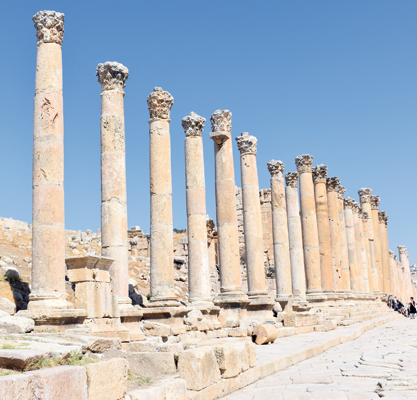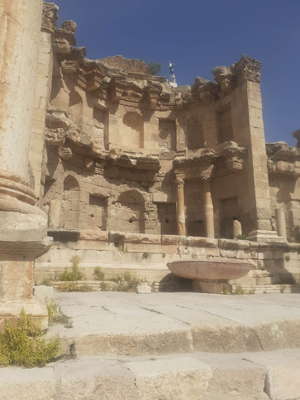You are here
Researcher seeks answers on ancient water network
By Saeb Rawashdeh - Oct 05,2017 - Last updated at Oct 05,2017

David Boyer
AMMAN — During the Hellenistic-Byzantine period (200BC-630AD), a networked water supply was found on the west side of Gerasa (modern day Jerash, 48km north of Amman), which supplied street fountains and the West Baths, according to an Australian scholar directing the Jerash Water Project that looks into ancient water management systems.
“Before the construction of the aqueduct system, city residents were probably relying on cisterns. The [network system] was expanded during the Roman period, but the full extent of the system has yet to be determined,” scholar David Boyer told The Jordan Times in a recent e-mail interview.
Some form of a network supply persisted in places on the west side of the city at least until the 8th century AD, he said, adding that, on the east side, there were aqueducts operating by the 2nd century AD, one of which probably supplied the large East Baths.
The strength of the east bank springs makes “the existence of an earlier system possible but has yet to be proven”, said the geologist, who spent 45 years in various fields including landscape analysis and photographic interpretation.
“A largely spring-fed water management system extended to the entire Jerash Valley from Souf in the north to the junction with the Zarqa River in the south, and also the neighbouring valley below Tannur Spring,” he added.
The system used every major spring in the valley, many of which have since dried up, the expert stressed, noting that this system was mainly used for irrigation and that a modified version of it was still in use up to the early 20th century.
Lower water tables and reduced spring flows means that only fragments of this system remain in use today, the scholar emphasised.
He said that “dozens of aqueducts have been identified within the Jarash Valley”.
While Gerasa’s sister cities in Decapolis such as Gadara and Abila had to resort to bringing water from sources in southern Syria through one of the longest aqueducts in the Roman Empire, Gerasenes had strong springs lying within a few kilometres of the city, Boyer explained.
“The aqueducts in the Gerasa area were of simple construction, usually cut directly into bedrock, and few engineering challenges were encountered except for the need to control water flow on steep gradients,” he continued.
The city itself was surrounded by springs: “A group of strong springs on the eastern side of the city supplied users close to the wadi and also provided irrigation water for farmers downstream: the only surviving spring in this group is Qairawan, which still provides water to Jerash residents.”
According to Boyer, the most significant water feature on the east side of the wadi was a 200 metre long, 15 metre high waterfall, which ceased to flow by the early Roman period.
There were no major springs in the city area on the west side of the wadi, so water was carried in by aqueducts from springs to the northwest and north of the city, the Australian expert noted.
The northwestern aqueduct system was operating by the 1st century AD and may have been the first major aqueduct operating in this period, he emphasised, adding that it was supplied by springs somewhere to the east of Dayr Al Liyat, although there are no strong springs in this area today.
Boyer has also been working on the ways water was distributed, stored and used.
“The Gerasa district was very fortunate in its access to many strong springs closeby in the Valley, good rainfall and rich soils,” he stated.
Inside the city, water was used to supply public water installations such as fountains and baths, Boyer claimed.
“Many domestic requirements were met with small private cisterns and access to street fountains, the scholar continued, noting that larger scale water storage in the city area is not yet well understood, with the largest confirmed reservoir (west of the Artemision) having a capacity of around 2,500 cubicmetre.
Related Articles
AMMAN — A PhD candidate in the Department of Classical and Near Eastern Archaeology at Bryn Mawr College in Pennsylvania is conducting a stu
AMMAN — Although the ancient sites of Ammon, Gerasa and Umm Qais share similarities with other sites in the Decapolis, the Levant, North Afr
AMMAN — The bedrock was cut and used as an integral part of the water supply system in ancient Gerasa.

















